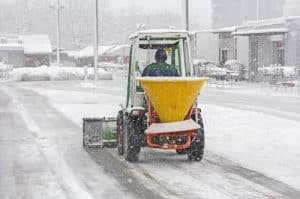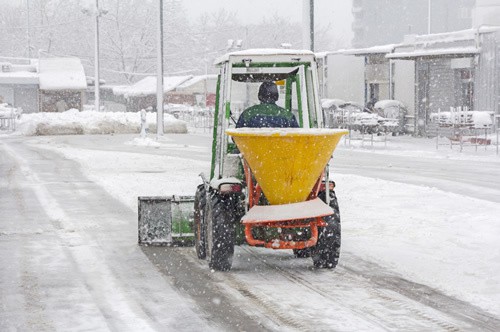
Have you ever heard of some winter ice melting "facts" that sound a little crazy or you wonder if they are really true? Well, at Brancato, we know ice. We think about snow and ice managment 24/7365, so let us clear up some ice melting facts vs fiction to help you get through the next Illinois winter! There are a lot of old tried-and-true ways to get rid of snow, especially in Chicago, where harsh winters are par for the course, but there are a few "effective" ice removal methods that are more legend than fact.
Fiction: Ash, sand, and cat litter melt snow in an environmentally friendly way.
Fact: While these help with traction on ice, they aren’t as good at melting snow as deicers and can cause environmental problems as well.
Fiction: The more salt you use, the better.
Fact: Excess salt kills beneficial soil bacteria and plants and storms can carry the salt into creeks and streams and eventually groundwater reserves, which can cause dangerous levels of chloride in drinking water.
Fiction: Chemical de-icers remove snow and ice without shoveling.
Fact: While it would be nice to have a method to completely clear pavement without time-consuming manual labor, chemical de-icers are an aid in snow removal. The purpose of de-icers is to loosen ice from pavement to make it easier to shovel and trying to use de-icers in any other way will only lead to a bigger mess to clean up.
Fiction: Adding more chemical de-icer will clear the snow faster.
Fact: The only thing additional de-icer will clear out is your wallet. Chemical de-icers work only as fast as the conditions and pavement temperatures will allow and adding more will do nothing to speed up the process. The best solution is to use the directed amount and let it work.
Fiction: Salt "burns" ice and snow to make it easier to shovel.
Fact: Salt is best used as preventative medicine; it works by preventing ice from bonding with pavement and has very little effect on ice that has already formed. Salt also loses most of its effectiveness once the pavement reaches a temperature of 15 degrees Fahrenheit or below.
Recognizing the difference between ice removal fact and fiction is a great way to aid you in combating the cold Chicago winters. A good system to follow if you wish to avoid any unhappy incidents with customers or employees is to pay close attention to the weather forecasts, place salt down on the pavement well in advance, and use chemical de-icers and good hard shoveling to keep sidewalks perfectly safe and clear. Or hire a professional to manage the risk of snow and ice management for you! Contact Brancato for a quote today!
Sources:
http://www.crawfordconservation.com/assets/pdf/hellbender/info-feb07.pdf
http://www.crgw.net/pamphlet%20for%20homeowners.pdf

